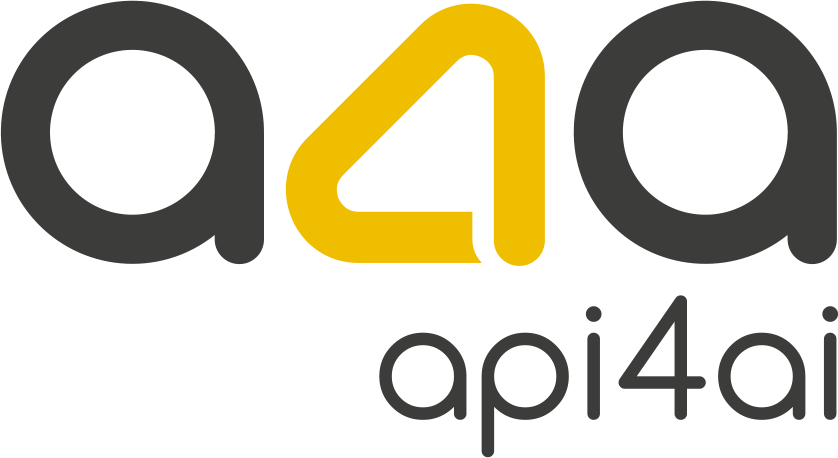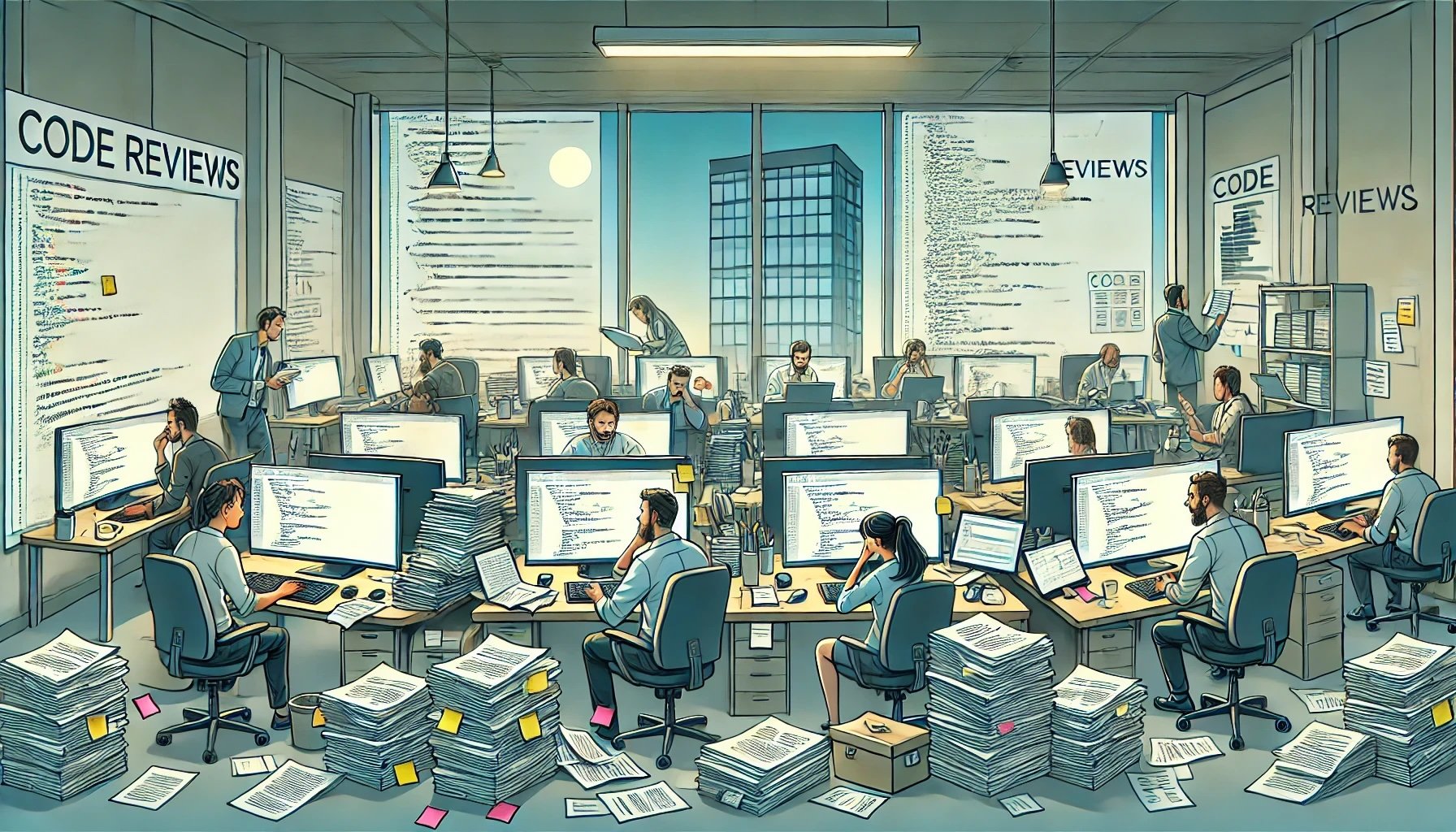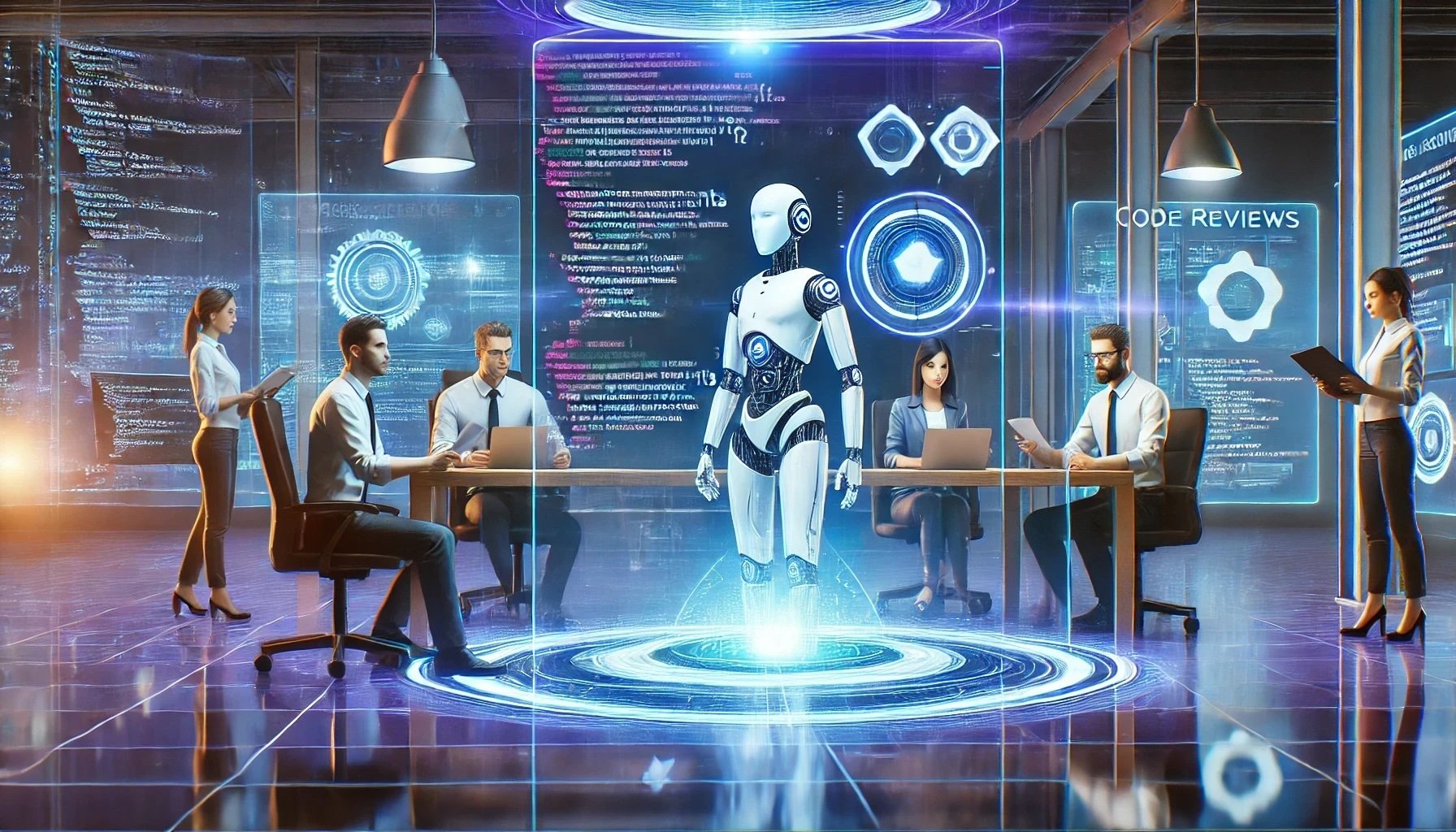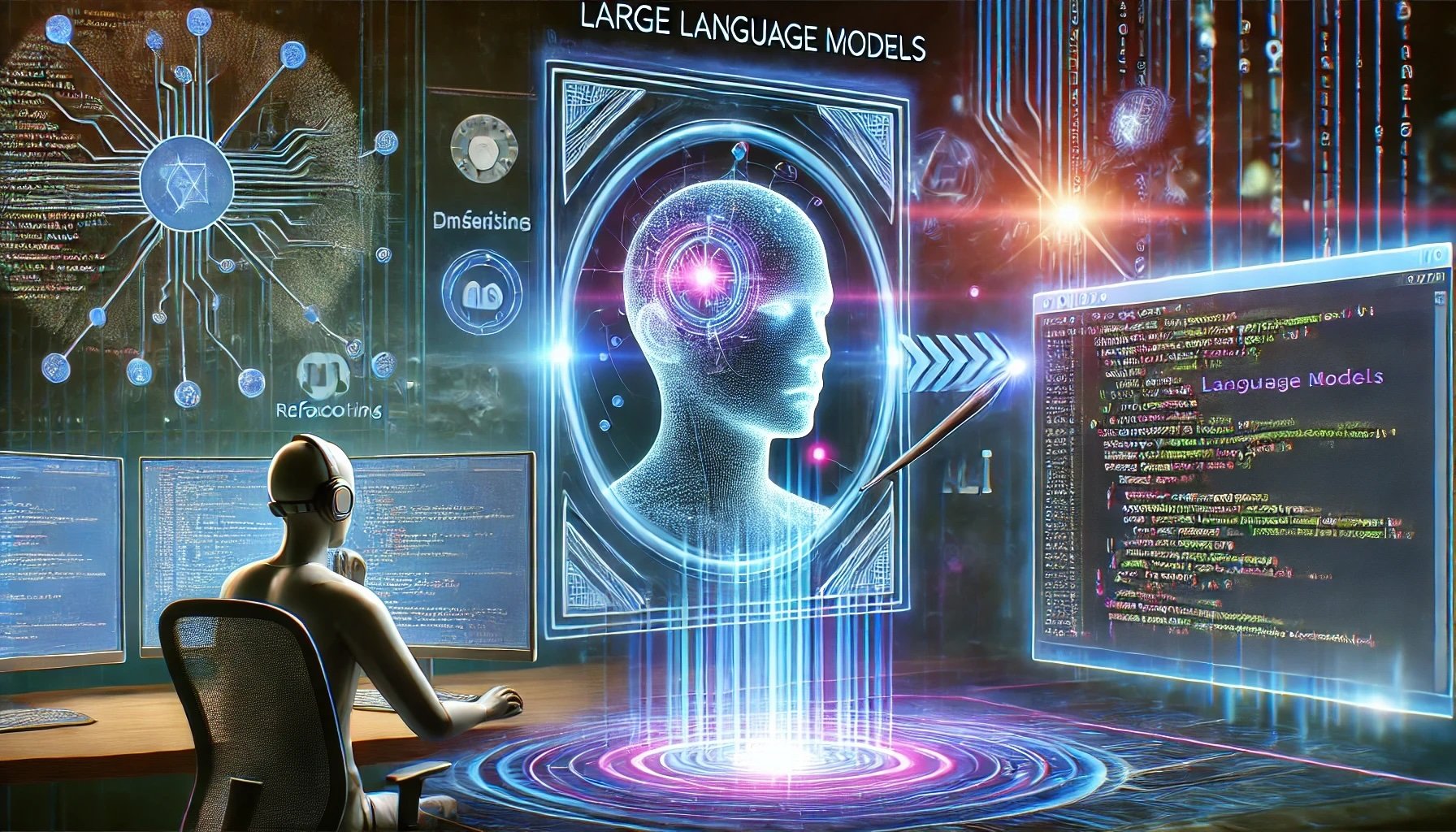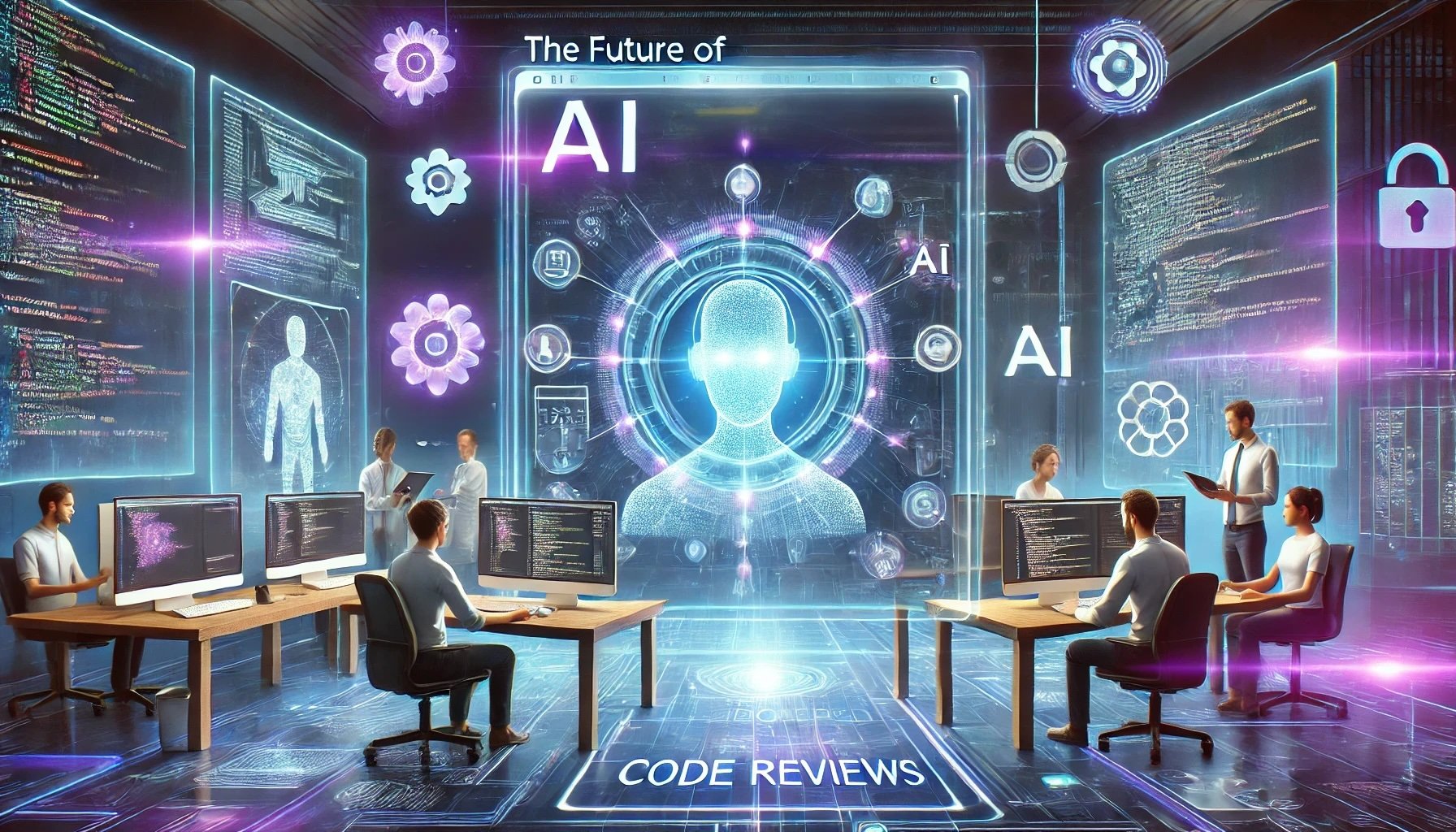Why AI-Powered Code Reviews Are Essential for Modern Dev Teams
Introduction: The Shift Toward AI in Modern Development
Software development has always been a fast-moving industry, with new tools and methodologies constantly emerging to improve efficiency. However, in recent years, one technology has made a particularly significant impact — artificial intelligence (AI). AI-powered solutions are transforming how developers write, review and maintain code, making workflows more efficient and reducing the burden of manual tasks.
The Evolution of AI in Software Engineering
AI has come a long way from being just a theoretical concept to a practical tool that assists developers in real-world applications. Two major advancements have driven this transformation:
Machine Learning and Natural Language Processing (NLP) in Code Analysis
Modern machine learning models, especially those based on deep learning, have reached a point where they can not only analyze text but also understand programming languages. Natural Language Processing (NLP), which powers AI chatbots and search engines, is now being applied to code, allowing AI to detect patterns, suggest improvements and even generate new code snippets.Automation of Repetitive Tasks
Traditionally, developers have spent a significant amount of time on repetitive tasks such as debugging, formatting and reviewing code. AI-powered tools now automate much of this work, helping teams focus on more complex and creative aspects of software development. For example, AI can detect security vulnerabilities, enforce coding standards and ensure consistency across large projects without requiring manual intervention.
With AI improving at an unprecedented rate, its role in software engineering will only expand. But the growing reliance on AI is not just about convenience — it’s a necessity driven by the changing demands of modern development teams.
Changing Expectations of Development Teams
The way software is built today is vastly different from just a decade ago. Development teams are under pressure to deliver high-quality products faster, while dealing with increasingly complex codebases. This shift has led to three major challenges:
Accelerated Release Cycles
The rise of Agile and DevOps methodologies has pushed companies to release new features and updates more frequently. Continuous Integration and Continuous Deployment (CI/CD) pipelines have made it possible to push code into production at a rapid pace. However, this speed comes with a challenge — ensuring that every piece of code is thoroughly reviewed and meets quality standards before it is merged. AI-powered code reviews help by quickly analyzing changes and providing instant feedback, reducing the risk of bugs making it into production.Increasing Codebase Complexity
Modern software applications are built with multiple programming languages, frameworks and integrations. A single project may include backend logic in Python, a frontend built with JavaScript and APIs connecting various services. As software grows, so does the difficulty of managing and maintaining clean, efficient code. AI-driven tools assist developers by identifying redundant code, spotting inconsistencies and ensuring best practices across different languages.Higher Demand for Code Quality and Maintainability
Poorly reviewed code leads to technical debt — issues that accumulate over time and become increasingly difficult to fix. As software becomes more critical in every industry, companies cannot afford to deploy unstable or insecure applications. Development teams must ensure that their code is not only functional but also scalable, maintainable and secure. AI-powered code reviews help by flagging potential problems early, guiding developers toward the best practices and ensuring that the code remains easy to manage in the long run.
The Need for AI-Powered Code Reviews
With these challenges in mind, AI is no longer just an optional enhancement for development teams — it’s becoming essential. As software engineering continues to evolve, teams must embrace AI-driven automation to keep up with the increasing pace, complexity and expectations of modern development. In the following sections, we’ll explore how AI-powered code reviews work, their benefits and why they are a game-changer for today’s engineering teams.
Traditional Code Reviews: Where They Fall Short
Code reviews are an essential part of software development. They help maintain quality, catch bugs before deployment and ensure consistency across a project. However, as development teams scale and projects become more complex, traditional code review processes often struggle to keep up. Manual reviews, while valuable, come with significant challenges that can slow down development cycles and affect team productivity.
Common Pain Points
Manual Reviews Are Time-Consuming
Code reviews require developers to carefully examine each change, line by line, looking for issues such as syntax errors, security vulnerabilities and deviations from coding standards. While this process is crucial for maintaining quality, it takes a considerable amount of time — especially in large projects where multiple developers contribute code daily.The larger the codebase, the longer it takes to review. Senior engineers often bear the burden of reviewing complex code, pulling them away from their primary tasks. This leads to delays in approvals, slowing down the entire development process.
Human Oversight and Subjectivity
Even the most experienced developers can miss issues during a manual review. Fatigue, distractions and cognitive bias can all play a role in overlooking bugs, inefficiencies or security flaws. Unlike machines, humans are not consistent in their evaluations — what one reviewer considers an issue, another might ignore.Subjectivity in reviews can also lead to disagreements within teams. Some developers might prefer a specific coding style, while others follow a different convention, leading to unnecessary back-and-forth discussions. These inconsistencies can result in unpredictable review outcomes and even friction between team members.
Limited Team Resources and Review Bottlenecks
Many development teams operate under tight deadlines with limited resources. Not every developer has the time to perform in-depth code reviews, leading to situations where only a few senior engineers handle the bulk of the review workload.When these key reviewers become overwhelmed, a bottleneck forms. Developers submitting code have to wait longer for feedback, which can slow down an entire sprint. In fast-moving teams working with Continuous Integration/Continuous Deployment (CI/CD) workflows, these delays can become a major obstacle.
Impact on Velocity and Morale
Slower Product Releases
A slow review process directly affects the speed at which features and fixes make it to production. When developers have to wait for feedback before merging their changes, it creates a bottleneck in the release pipeline.In modern software development, where rapid iteration is the norm, waiting days or even weeks for code reviews is not sustainable. The longer it takes to review code, the higher the risk of introducing merge conflicts, which adds even more complexity to the process. As a result, product releases get delayed, affecting the overall business strategy and customer experience.
Developers Juggling Frequent Context-Switching
When developers submit a piece of code for review, they don’t immediately move on to a new task and forget about it. Often, they have to revisit their work once feedback comes in, making necessary changes and resubmitting it for approval.However, if a review takes too long, developers have already shifted their focus to new tasks. When feedback finally arrives, they have to pause their current work, switch back to the old code and try to remember the context behind their previous implementation. This constant context-switching is mentally exhausting and disrupts workflow efficiency.
Over time, these disruptions can lead to frustration and burnout. Developers may feel that the code review process is slowing them down rather than helping them improve. As a result, they may start rushing through reviews or bypassing best practices just to get their changes approved faster, which ultimately impacts software quality.
The Need for a Smarter Approach
The limitations of traditional code reviews are clear — manual processes are slow, inconsistent and prone to bottlenecks. While peer reviews will always be valuable, modern development teams need a smarter approach to keep up with growing demands. This is where AI-powered code reviews step in, automating repetitive tasks, improving accuracy and ensuring a faster, more consistent review process. In the next section, we’ll explore how AI-driven solutions are transforming the way developers review and manage code.
Key Advantages of AI-Powered Code Reviews
Traditional code reviews, while essential, come with challenges — delays, inconsistencies and inefficiencies that slow down development cycles. AI-powered code review tools address these pain points by introducing automation, precision and scalability into the process. By leveraging machine learning and large language models (LLMs), AI can analyze code faster, provide objective feedback and help teams collaborate more effectively.
Speed and Scalability
One of the most significant benefits of AI-powered code reviews is the dramatic reduction in review time. In a fast-paced development environment, waiting for manual feedback can stall projects and create bottlenecks. AI eliminates this problem by providing near-instant analysis.
Faster Feedback Loops
With automated code review, feedback is generated within minutes rather than hours or days. As soon as a developer submits a merge request, AI scans the code, detects potential issues and provides detailed comments. This allows teams to fix problems earlier in the development cycle, reducing the need for rework later on.Handling Large Codebases Efficiently
Modern applications are built with thousands — sometimes millions — of lines of code spread across multiple repositories. Manually reviewing such large-scale projects is not just time-consuming but also prone to human error. AI-driven tools can scan massive codebases quickly, ensuring that even the most complex applications maintain consistency and quality.Support for Multiple Programming Languages
Most development teams work with more than one language, whether it’s JavaScript for front-end development, Python for machine learning or C++ for system-level programming. AI-powered tools are trained to analyze multiple languages, making them a versatile solution for diverse engineering teams. Instead of requiring separate reviewers for each language, AI can handle everything in one go, reducing the dependency on specific domain experts.
Consistent Quality
One of the biggest drawbacks of manual code reviews is inconsistency. Every developer has their own approach to evaluating code, which can lead to variations in feedback. AI-powered code reviews bring a structured, objective approach that ensures high standards are maintained across every review.
Objective and Rules-Based Evaluations
Unlike human reviewers, AI does not get tired, distracted or influenced by personal coding preferences. It follows predefined rules and best practices, ensuring that every review is conducted with the same level of scrutiny. This reduces subjectivity and makes code reviews more reliable.Detecting Security Vulnerabilities
Security flaws can be difficult to catch during manual reviews, especially when developers are focused on functionality rather than security concerns. AI-powered tools are trained to identify vulnerabilities, such as hardcoded credentials, insecure dependencies and potential injection attacks. Catching these issues early helps prevent costly security breaches down the line.Enforcing Coding Standards
Every development team has coding guidelines, but ensuring that everyone follows them is a challenge. AI automatically flags deviations from coding standards, whether it’s inconsistent formatting, inefficient loops or redundant code. This keeps the codebase clean, readable and easier to maintain.Performance Optimization
AI not only checks for errors but also identifies performance bottlenecks. It can highlight inefficient algorithms, suggest better approaches and ensure that the code runs as optimally as possible. This is especially useful in large-scale applications where performance improvements can have a significant impact.
Enhanced Collaboration
Code reviews are not just about finding bugs — they’re also a learning opportunity. AI-powered code review tools help foster a culture of continuous improvement by providing constructive feedback and bridging the gap between junior and senior developers.
Constructive, Unbiased Feedback
One common challenge in traditional code reviews is that feedback can sometimes feel personal, leading to friction between developers. AI eliminates this issue by providing neutral, objective feedback based on best practices. This makes it easier for developers to accept suggestions without feeling criticized.Helping Junior Developers Learn Faster
Junior developers often rely on code reviews to understand best practices and improve their skills. AI-powered tools act as a mentor by offering clear, detailed explanations for suggested improvements. This accelerates the learning process and helps junior engineers grow into more proficient developers faster.Ensuring Best Practices Across Teams
In large teams, ensuring consistency across different developers and projects can be a challenge. AI-driven tools help enforce best practices, making sure that all team members follow the same coding principles. This is especially beneficial for remote teams and distributed development environments, where alignment can be difficult to achieve.
The Competitive Advantage of AI-Powered Code Reviews
By improving speed, consistency and collaboration, AI-powered code review tools provide a significant advantage for modern development teams. They help streamline workflows, reduce technical debt and ensure that high-quality code reaches production faster. As AI continues to evolve, its role in software development will only become more essential, making it a must-have tool for teams that want to stay ahead of the curve.
The LLM Revolution: How Large Language Models Transform Code Analysis
The way developers review and analyze code is changing and large language models (LLMs) are at the center of this transformation. Unlike traditional rule-based static analysis tools, LLMs bring a deeper, more contextual understanding to code review, allowing for more accurate, insightful and efficient analysis. These AI models go beyond just detecting syntax errors — they can interpret code intent, recognize patterns across different programming languages and improve over time through continuous learning.
Contextual Understanding: Seeing the Bigger Picture in Code
One of the most powerful features of LLMs is their ability to understand the broader context of a codebase, rather than just scanning for isolated issues. Traditional linters and static code analysis tools work by applying predefined rules to detect syntax errors, missing semicolons or formatting inconsistencies. While useful, these tools often fail to grasp the deeper logic and intent behind a piece of code.
LLMs, on the other hand, analyze code at a granular level. They can determine not just whether the syntax is correct, but also whether the implementation aligns with best practices and the intended functionality. For example:
Instead of just flagging a missing
returnstatement in a function, an LLM can recognize that the function is supposed to return a calculated value and suggest a proper correction.It can detect inefficient implementations, such as a poorly optimized sorting algorithm and suggest a more efficient alternative.
It understands naming conventions, ensuring that function and variable names align with the purpose they serve in the code.
This deeper comprehension allows AI-powered tools to provide feedback that is more meaningful and actionable. Rather than simply identifying what is wrong, LLMs can explain why an issue exists and suggest how to improve it in a way that makes sense within the broader project.
Multi-Language Support: One AI, Many Codebases
Software development is no longer confined to a single programming language. Many modern applications are built using a combination of languages — JavaScript for the frontend, Python for machine learning models, Go for backend services and C++ for high-performance components. Manually reviewing such diverse codebases requires expertise in multiple languages, which can be a challenge for development teams.
LLMs address this challenge by being trained on vast amounts of code across multiple languages. These models are capable of:
Parsing and understanding syntax differences across languages like Python, Java, C#, Go, PHP, JavaScript and more.
Recognizing cross-language interactions, such as API calls between a Python backend and a JavaScript frontend.
Applying best practices universally, ensuring that regardless of the language, coding standards are maintained.
For example, if an AI-powered review tool detects an issue in a Python script and a similar problem in a Java module, it can apply relevant fixes to both, despite the syntactic differences between the languages. This makes LLM-powered code reviews incredibly valuable for full-stack teams working on large-scale applications.
Adaptive Learning: Evolving with Codebases and Trends
One of the biggest limitations of traditional static analysis tools is their rigidity. They rely on fixed sets of rules that do not evolve unless manually updated by developers. This means that as coding practices change, new vulnerabilities emerge or frameworks evolve, these tools quickly become outdated.
LLMs, however, continuously improve by learning from new code patterns, user feedback and real-world development trends. This adaptability ensures that:
Reviews stay relevant even as programming languages evolve and new frameworks gain popularity.
AI-generated suggestions improve over time, refining their accuracy based on how developers respond to feedback.
Models recognize company-specific patterns, learning from how a particular team writes and reviews code to provide more tailored recommendations.
For instance, if a development team frequently uses a specific design pattern or follows a unique naming convention, an LLM-based tool can gradually learn these preferences and incorporate them into its analysis. This level of customization makes AI-powered code reviews more effective than one-size-fits-all rule-based approaches.
A New Era of Intelligent Code Reviews
The rise of LLMs marks a fundamental shift in how code reviews are conducted. By providing deep contextual understanding, supporting multiple languages and continuously improving through adaptive learning, these AI models are making the review process faster, smarter and more effective. As more teams integrate AI-powered solutions into their development workflows, code quality will improve, release cycles will accelerate and engineers will be able to focus on building great software rather than getting stuck in endless review loops.
An Inside Look at AI-Driven Code Review Tools
AI-powered code review tools have changed the way developers ensure code quality, shifting from slow, manual reviews to fast, automated analysis. These tools streamline the review process by detecting errors, enforcing coding standards and providing actionable feedback — without requiring human intervention at every step. In this section, we’ll explore how AI-driven code review tools work, followed by a closer look at CRken, an advanced AI-powered code review solution.
Core Workflow: How AI-Powered Code Review Works
AI-driven code review tools integrate seamlessly into modern development workflows, providing instant feedback whenever code is pushed. Here’s how a typical automated review process works:
Code Push Triggers an Automated Review
When a developer submits a new piece of code — whether by creating a pull request or updating an existing one — an automated trigger activates the AI-powered review process. In GitLab, for example, this is done via a webhook that detects new Merge Requests and notifies the AI engine that there is new code to analyze.
AI Engine Scans the Code for Issues
Once the trigger is activated, the AI-powered tool scans the code, looking for various issues such as:
Syntax errors and logic flaws
Security vulnerabilities
Inefficient algorithms or redundant code
Deviation from best coding practices and team conventions
Unlike static analysis tools, AI doesn’t just check for predefined rules — it understands the context of the code, ensuring that recommendations align with functionality rather than just syntax correctness.
Providing Contextual Comments and Suggestions
Instead of a simple pass/fail result, AI-generated feedback is integrated directly into the code review platform. It leaves detailed comments next to the affected lines, explaining the problem and offering possible solutions. This makes it easy for developers to address issues without switching between different tools.
Review Results Appear Directly in the Code Hosting Platform
The final step ensures that all feedback is visible within the developer’s existing workflow. Whether a team is using GitLab, GitHub or another platform, the AI-powered code review tool integrates seamlessly, displaying feedback alongside human comments. Developers can respond to AI-generated suggestions, accept fixes or discuss further changes — all without leaving their code repository.
This streamlined approach drastically reduces the time required for reviews, improves code consistency and ensures that issues are caught early in the development process.
Example: CRken — A Next-Generation AI Code Review Tool
One powerful example of an AI-driven code review tool is CRken, a cloud-based API designed to automate code reviews directly within GitLab. Originally developed for internal use, CRken is now publicly available, offering developers a scalable solution for improving code quality.
Here’s how CRken enhances the code review process:
Built on Cutting-Edge LLMs for Enhanced Precision
CRken leverages state-of-the-art large language models (LLMs) to analyze code with a deep understanding of syntax, logic and best practices. Unlike simple rule-based checkers, it can interpret code intent, making its feedback more meaningful and accurate.Processes Multiple Languages with Minimal Setup
Modern development teams work with various programming languages and CRken is designed to handle them all. Whether a project is written in JavaScript, Python, Go, C#, PHP or other languages, CRken automatically detects the language and applies the appropriate checks. This eliminates the need for developers to configure separate review tools for each language.Fully Automates the Review Process
Once integrated into a GitLab repository, CRken requires no manual intervention. As soon as a developer submits a Merge Request, the tool automatically analyzes the modified files and provides feedback. This allows teams to maintain code quality without disrupting their workflow.Delivers Granular Feedback to Accelerate Development Cycles
One of the key benefits of CRken is its ability to provide precise, targeted feedback rather than overwhelming developers with generic recommendations. Instead of flagging entire files, it highlights specific lines that require attention, ensuring that developers can quickly identify and fix issues. By reducing back-and-forth discussions and review delays, CRken helps teams ship features faster while maintaining high-quality standards.
Why AI-Driven Code Reviews Are the Future
AI-powered code review tools like CRken represent a major shift in software development, making reviews faster, more reliable and less burdensome on development teams. By automating the review process, these tools allow developers to focus on writing great code while ensuring that every submission meets industry best practices. As AI continues to evolve, code reviews will become even more efficient, helping teams maintain high-quality software without slowing down innovation.
Real-World Impact on Dev Teams
AI-powered code reviews are not just a theoretical improvement — they bring measurable benefits to real development teams. By automating the review process, AI-driven tools help engineers work more efficiently, reduce errors and speed up software delivery. In this section, we’ll explore how these tools impact productivity, improve code quality and deliver concrete results for modern development teams.
Productivity Gains: Faster Development with Less Overhead
One of the biggest challenges in software development is balancing speed with quality. Traditional code reviews, while essential, often slow down development cycles due to manual feedback loops and bottlenecks. AI-powered code reviews streamline this process, allowing teams to release features faster without compromising on quality.
Reduced Lead Times for Feature Releases
In a competitive development environment, shipping new features quickly is crucial. AI-driven code reviews remove unnecessary delays by providing instant feedback as soon as a Merge Request is created. Instead of waiting for a teammate to review the code manually, developers receive immediate insights, allowing them to address issues on the spot. This significantly shortens the time between writing code and deploying it to production.Automated Feedback Cycles Free Up Developers for Creative Work
Reviewing code manually is time-consuming, often pulling senior developers away from more strategic work. AI-powered tools handle the repetitive aspects of code review — such as enforcing style guides, checking for security vulnerabilities and identifying inefficiencies — so that human reviewers can focus on high-level architectural decisions, mentoring junior developers and solving complex engineering challenges. This shift enables teams to spend more time innovating rather than getting stuck in tedious review cycles.
Quality Assurance: Reducing Errors and Technical Debt
Shipping code quickly is important, but it must also be reliable. AI-powered code reviews play a crucial role in improving quality assurance by catching errors before they reach production. This reduces the risk of costly bugs, security vulnerabilities and technical debt.
Lower Risk of Post-Deployment Errors
Bugs that slip through the review process can lead to serious issues in production, affecting user experience and system stability. AI-driven code reviews detect potential problems at an early stage, preventing them from making it into the final release. By enforcing best practices and catching security vulnerabilities, these tools help teams avoid expensive rollbacks, emergency patches and reputational damage caused by software failures.Fewer Code Churns and Rollbacks
Code churn — rewriting or modifying code shortly after it has been merged — wastes valuable development time. Many churn issues arise because problems were not detected during the initial review. AI-powered tools provide detailed and precise feedback, ensuring that developers make necessary corrections before code is merged. As a result, teams experience fewer instances of having to revisit and rework code, leading to more stable and maintainable software.
Success Metrics and Case Studies: Measurable Improvements
The impact of AI-driven code reviews is not just anecdotal — development teams that implement these tools report significant improvements in efficiency, quality and team morale.
Up to 30% Faster Shipping Times
Many teams using AI-powered code reviews report that they are able to release features up to 30% faster. By reducing the time spent on manual code reviews, teams can keep up with aggressive sprint deadlines without sacrificing quality. This is especially valuable for companies operating in highly competitive industries where rapid iteration and frequent updates are necessary to stay ahead.Decreased Downtime and Improved Morale
Developers often express frustration with slow and inefficient review processes, particularly when they have to wait for feedback or deal with inconsistent review standards. AI-driven tools eliminate these roadblocks by providing immediate and objective feedback, allowing engineers to move forward with confidence. As a result, teams experience fewer delays, reduced downtime and a smoother development workflow. Additionally, by offloading repetitive review tasks to AI, senior engineers are freed from review fatigue, leading to a more engaged and motivated development team.
AI-Powered Code Reviews: A Game Changer for Dev Teams
The benefits of AI-powered code reviews extend beyond efficiency — they also enhance software quality, improve developer experience and accelerate feature releases. As more teams embrace AI-driven solutions, these tools will continue to reshape modern software development, allowing engineers to build better products faster while maintaining high coding standards. The future of code review isn’t just automated — it’s intelligent, adaptive and designed to empower developers to focus on what they do best: writing great software.
Conclusion: Embracing AI for the Future of Code Reviews
As software development continues to evolve, the role of AI in code reviews is becoming more significant. Traditional manual reviews, while valuable, often struggle to keep up with the speed and complexity of modern development cycles. AI-powered tools provide a solution by automating the review process, enhancing code quality and allowing developers to focus on what truly matters — building great software.
Key Takeaways: Why AI-Powered Code Reviews Matter
Throughout this discussion, one thing has become clear: AI-driven code reviews are not just a convenience; they are becoming a necessity. Here’s why:
They solve the limitations of manual code reviews. Traditional processes can be slow, inconsistent and prone to human error. AI-powered tools ensure that reviews happen instantly, reducing bottlenecks and freeing up developers for more strategic work.
Large Language Models (LLMs) bring adaptability and deeper understanding. Unlike static code analysis tools that rely on rigid rule sets, LLMs understand the context of a project. They recognize patterns, enforce best practices and continuously improve over time based on feedback.
Automation fosters consistency, efficiency and faster releases. AI ensures that every piece of code is reviewed with the same level of scrutiny, reducing inconsistencies that arise from human subjectivity. Automated feedback cycles help teams resolve issues quickly, leading to shorter development timelines and fewer production bugs.
The impact of AI-driven code reviews goes beyond just catching errors — it creates an environment where developers can work more efficiently, collaborate more effectively and deliver high-quality software at a faster pace.
A Forward-Looking Perspective: The Future of AI in Software Development
AI-powered code review tools are just the beginning. As AI continues to advance, its role in software engineering will expand beyond static analysis and into more dynamic aspects of development.
Smarter automation in coding workflows. Future AI models will not only review code but also assist in generating more complex refactoring suggestions, automatically fixing common issues and even writing entire sections of code based on developer intent.
Predictive analytics for proactive issue detection. AI will be able to analyze historical code patterns to predict potential problem areas before they even become an issue. This will help teams avoid technical debt and maintain healthier codebases over time.
Early adopters will gain a competitive advantage. Companies that integrate AI into their development workflows now will be better positioned to handle future challenges. AI-driven development will soon be the standard and teams that adapt early will stay ahead of the curve, delivering software faster and with fewer defects.
Call to Action: Start Exploring AI-Powered Code Reviews
The shift toward AI-powered development is already happening and now is the time for teams to explore how these tools can enhance their workflows. Here’s how to get started:
Stay informed. AI-driven development is evolving rapidly. Developers and engineering leaders should stay up to date with advancements in AI-powered code review tools, LLM capabilities and best practices for integrating AI into development pipelines.
Experiment with modern code review platforms. Many AI-powered tools, including CRken, offer seamless integration with existing development workflows. Exploring these solutions can provide immediate productivity benefits while ensuring that teams are prepared for the future of software development.
Encourage a culture of AI adoption. AI should not be seen as a replacement for developers but as a tool that enhances their capabilities. Teams that embrace AI-driven code reviews will be able to work more efficiently, catch errors faster and focus on solving more complex problems.
Final Thoughts
The future of software development is one where AI and human expertise work together to create better, more reliable applications. By adopting AI-powered code reviews, teams can reduce friction in their workflows, improve code quality and accelerate their release cycles. Whether your team is just beginning to explore AI-driven development or already using AI-powered tools, one thing is certain: embracing AI in code reviews is a step toward a more efficient and intelligent way of building software.
